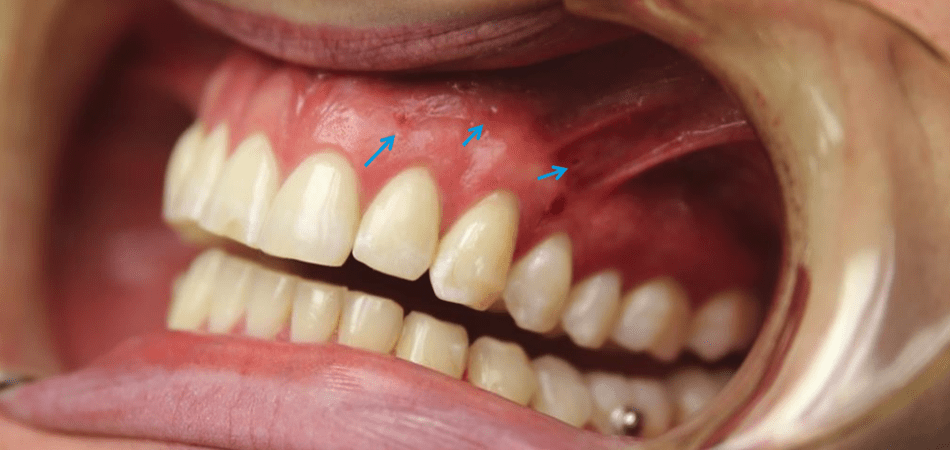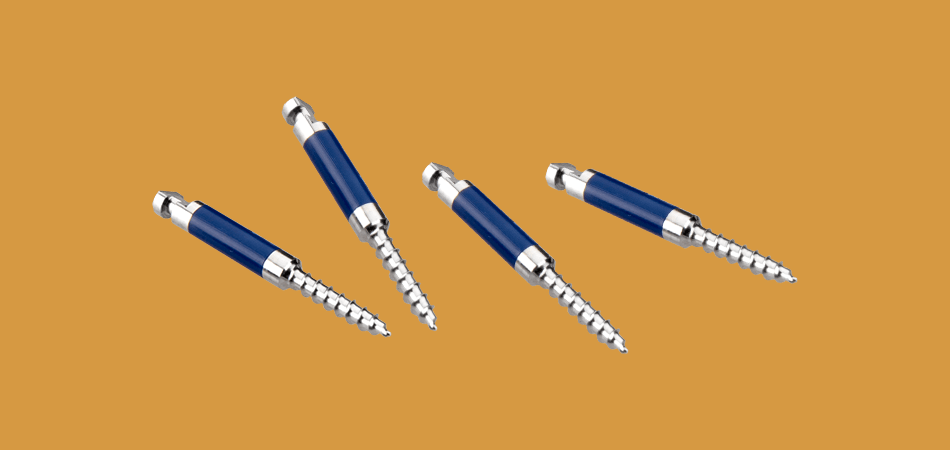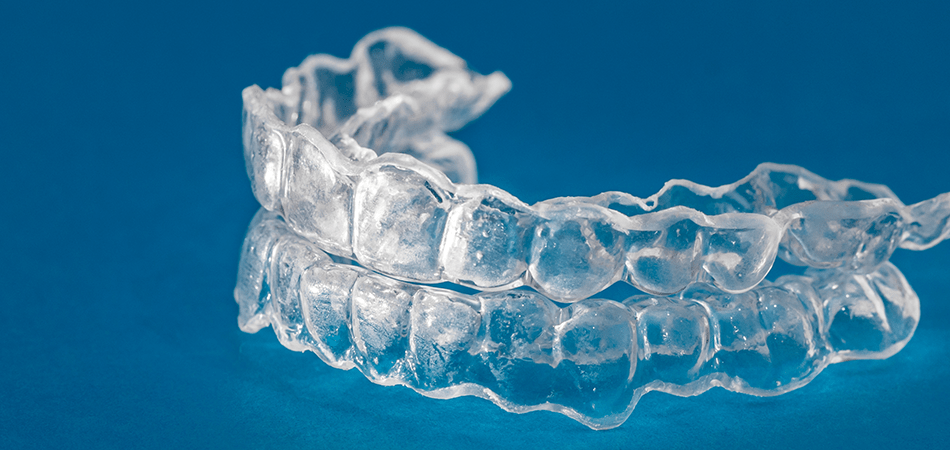Patients that are stuck, I do [MOPs®]. Patients that are burned out, I do it. Non-responsive teeth, I do it. Patients in relapse, I do it. Issues with root resorption, I do it.
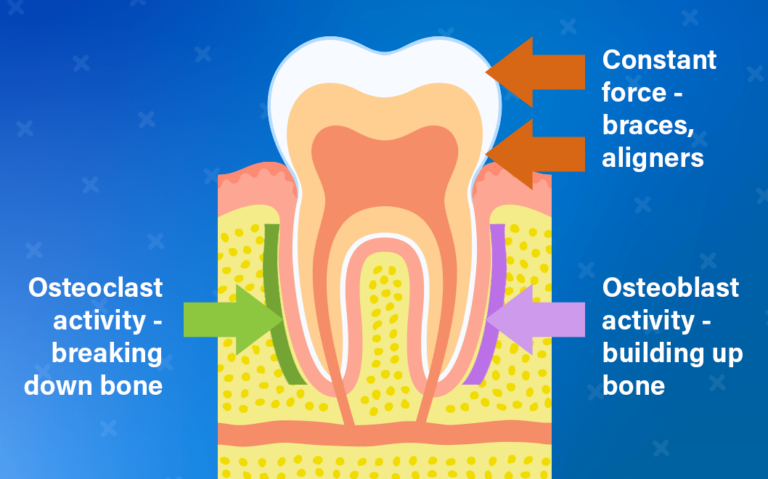
The MOPs Effect
Micro Osteo Perforation (aka MOPs, Propel®)- Micro = [adj.] extremely small
- Osteo = [prefix.] relating to the bones
- Perforation = [n.] a hole made by boring or piercing
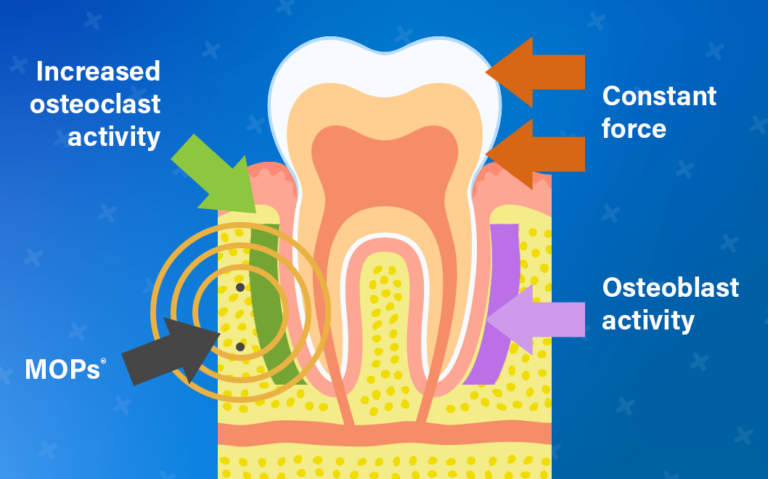
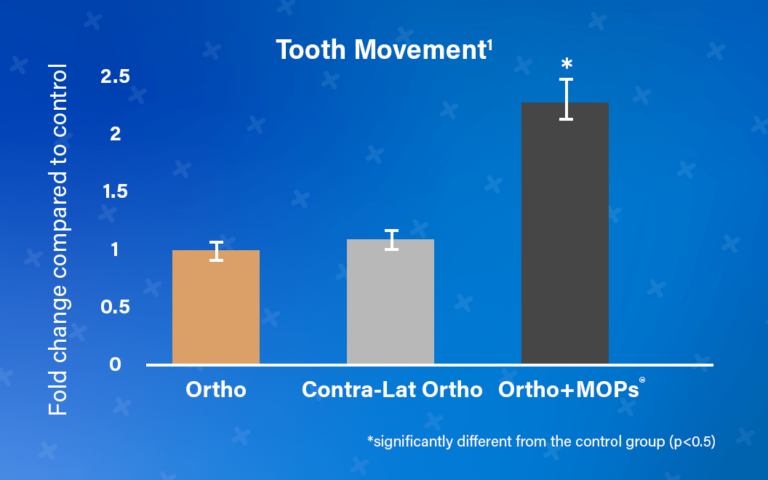
MOPs can be performed in-office within a matter of minutes, as only topical anesthetic is required. If necessary, MOPs can be administered more than once on the same patient. MOPs can be performed on patients with brackets or clear aligners, just before treatment begins, or at any time during active treatment. The placement of MOPs varies from patient to patient and is best determined by a treating clinician. Due to its concentrated localized effect, MOPs is most commonly administered around rate-limiting teeth.
MOPs and the Bottom Line
The benefits of MOPs reach far beyond clinical solutions; there are considerable practice solutions too. Not only does MOPs accelerate bone remodeling and orthodontic tooth movement, it increases predictability and reduces treatment time, allowing for reduced chair time, greater practice efficiency, and ultimately a greater patient experience.
What Tools are Involved
Propel® Excellerator® Series Drivers are used in conjunction with Propel Excellerator Series Tips in order to perform micro-osteoperforations. The Propel device is the only product on the market cleared by the FDA for use in micro-osteoperforation. The patented Excellerator Series devices are purposefully designed and manufactured with specially treated high-grade surgical steel to ensure safety and to help prevent shearing, breakage or dulling and minimize soft tissue injury.
- Micro-Invasive, In-Office Treatment
- Little to No Recovery Time
- Compatible with Brackets and Aligners
- 62% Faster Tooth Movement
- Accelerates Bone Remodeling and Orthodontic Tooth Movement
- Reduces Treatment Time
- Increases Predictability
- Releases Challenging Movements
- Preserves Anchorage
- Protects Against Root Resorption
- Reduces Chair Time
- Increases Profitability per Patient Visit
- Increases Patient Satisfaction and Referrals
- Increases Revenue
See MOPs Cases
Read More: The use of Propel to increase the rate of aligner progression Dr. Thomas Shipley
The Propel device is indicated for manually drilling holes in tissue and bone for orthodontic and dental operative procedures including: (1) initiation holes for drill bits, implants, screws, plates, and other orthodontic appliances; and (2) for use as a tool to create micro-osteoperforations. | RX only | See Instructions for Use for Full Prescribing Information.
- Alikhani, M., Raptis, M., Zoldan, B., Sangsuwon, C., Lee, Y. B., Alyami, B., . . . Teixeira, C. (2013). Effect of micro-osteoperforations on the rate of tooth movement. American Journal of Orthodontics and Dentofacial Orthopedics, 144(5), 639-648.
- Frost, H. M. The regional acceleratory phenomenon: a review. Henry Ford Hospital Medical Journal. 1983;31(1):3.
- Nicozisis, J. (2013) Accelerated tooth movement technology. OrthoTown.
- Alikhani, M. (2018). Clinical Guide to Accelerated Orthodontics With a Focus on Micro-Osteoperforations. Cham: Springer International Publishing. doi:10.1007/978-3-319-43401-8.
